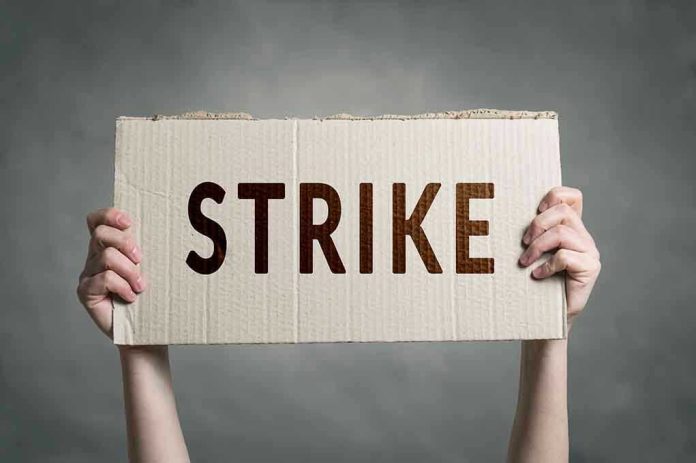
Air Canada’s massive flight attendant strike finally ends after government intervention forced both sides into marathon negotiations, revealing how union power can cripple essential services until political pressure demands resolution.
Story Highlights
- Over 10,000 flight attendants grounded Canada’s largest airline for six days during peak travel season
- Federal government imposed binding arbitration after union defied return-to-work orders
- Tentative agreement reached through overnight mediation, ending nationwide travel chaos
- Operational recovery expected to take 7-10 days as airline repositions aircraft and crews
Strike Paralyzes National Transportation Network
The Canadian Union of Public Employees brought Air Canada and Air Canada Rouge operations to a complete halt beginning August 13, 2025. Over 10,000 flight attendants walked off the job after contract negotiations collapsed, stranding thousands of passengers during the busy summer travel season. The union’s aggressive tactics demonstrated how organized labor can hold essential infrastructure hostage, forcing government intervention to protect public interests and economic stability.
Government Steps In After Union Defies Orders
Jobs Minister Patty Hajdu and the Canada Industrial Relations Board imposed binding arbitration on August 16, issuing a return-to-work order that CUPE initially ignored. This brazen defiance of government authority highlighted the dangerous precedent when unions prioritize their demands over national economic disruption. The continued strike despite official orders exposed the limits of government power when dealing with militant union leadership willing to defy legal directives.
Marathon Mediation Breaks Labor Standoff
Mediator William Kaplan oversaw intensive overnight negotiations that finally produced a tentative agreement on August 19. CEO Michael Rousseau announced the deal while apologizing to stranded customers and warning of complex operational challenges ahead. The settlement came only after sustained government pressure and public frustration reached critical levels, forcing union leadership to accept terms they could have negotiated weeks earlier without inflicting nationwide travel chaos.
Economic Fallout Reveals Strike’s True Cost
The six-day shutdown inflicted massive financial losses on Air Canada while disrupting Canadian tourism and business sectors. Thousands of passengers faced canceled flights, missed connections, and vacation disruptions during peak summer travel. The strike’s timing maximized economic damage, demonstrating how union tactics often target periods when their leverage causes maximum public hardship rather than focusing solely on legitimate workplace concerns.
Air Canada reaches tentative deal with flight attendants, to resume operations https://t.co/EbxuYvcLbk
— FOX Business (@FoxBusiness) August 19, 2025
Air Canada expects 7-10 days to fully restore normal operations as aircraft and crews must be repositioned nationwide. This extended recovery period compounds the initial disruption, showing how labor militancy creates cascading effects long after agreements are reached. The precedent concerns conservative observers who recognize how essential service strikes can paralyze critical infrastructure when unions wield disproportionate power over public welfare and economic stability.
Sources:
2025 Air Canada flight attendants strike







